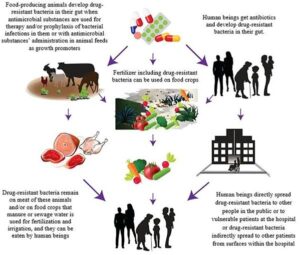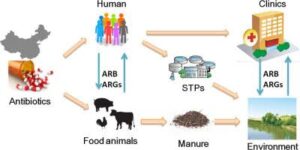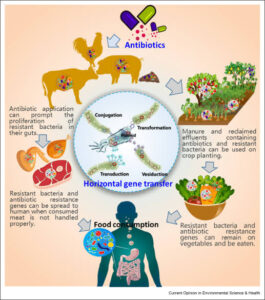Back to: MICROBIOLOGY 100 LEVEL
Welcome to class!
Welcome back, superstar learner! You’re doing a fantastic job, and I’m so proud of the energy and curiosity you bring to class each time. Today, we’re talking about something very important to your health and the health of everyone around you—Antibiotic Production and Resistance. This lesson is not just science—it’s something that touches your life every time you fall sick or go to the pharmacy. Let’s understand it together, nice and easy!
Antibiotic Production And Resistance
What Are Antibiotics?
Antibiotics are medicines used to kill or stop the growth of bacteria that cause infections. They do not work on viruses like those that cause the flu or common cold. We use antibiotics for diseases like pneumonia, typhoid fever, tuberculosis, and many others.

How Are Antibiotics Produced?
Many antibiotics come from microorganisms, especially fungi and bacteria, which naturally produce these substances to fight other microbes in their environment.
Some famous examples include:
Penicillin – The first antibiotic ever discovered, made by a fungus called Penicillium notatum. It’s used to treat many infections.
Streptomycin – Made by a bacterium called Streptomyces griseus, used to treat TB.
Tetracycline, erythromycin – Also produced by Streptomyces species.
The process usually involves:
Growing the microbe in special conditions (like in large tanks).
Harvesting the substance it produces.
Purifying and processing it into tablets, capsules, or injections.
Thanks to biotechnology, scientists can now also modify microbes to produce improved versions of antibiotics.
What Is Antibiotic Resistance?
Now here’s the challenge: Sometimes, bacteria change or adapt so that the antibiotic no longer works against them. This is called antibiotic resistance.

It’s like when an unwanted guest in your house learns how to ignore your warning and stays anyway. The more you try the same method, the less effective it becomes.
Causes of Antibiotic Resistance:
Overuse of antibiotics (e.g., taking them when not needed)
Not finishing your prescription (stopping when you feel better instead of completing the dose)
Using antibiotics in animals for faster growth (common in agriculture)
Poor infection control in hospitals or clinics
Why Is This a Big Problem?
When bacteria become resistant, common infections become harder or impossible to treat, leading to longer illnesses, more hospital stays, and sometimes even death.

Imagine a mosquito coil that used to chase mosquitoes away. But now the mosquitoes have learned to ignore it! You’d need a stronger method, right? That’s what happens when bacteria become resistant.
Summary
- Antibiotics are medicines made mostly from microbes to fight bacterial infections.
- Microorganisms like Penicillium and Streptomyces produce natural antibiotics.
- Antibiotic resistance happens when bacteria adapt and antibiotics no longer work.
- Causes include misuse and overuse of antibiotics.
- Resistance is dangerous because it makes infections harder to treat.
Evaluation
- What are antibiotics used for?
- Name one microbe that produces antibiotics.
- What is antibiotic resistance?
- Mention two causes of antibiotic resistance.
- Why is antibiotic resistance a serious health issue?
Remember, you’re not just learning for exams—you’re gaining real-world knowledge that can help you, your family, and your community. Stay smart, stay curious, and trust Afrilearn to keep walking with you. You are truly unstoppable!
